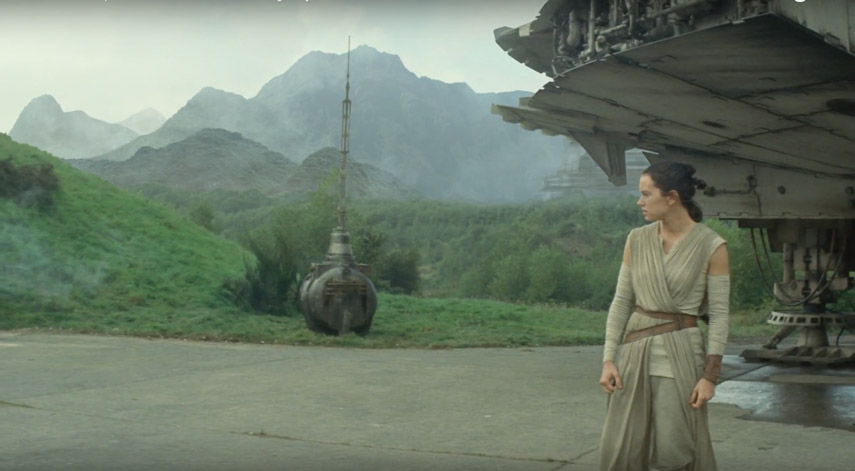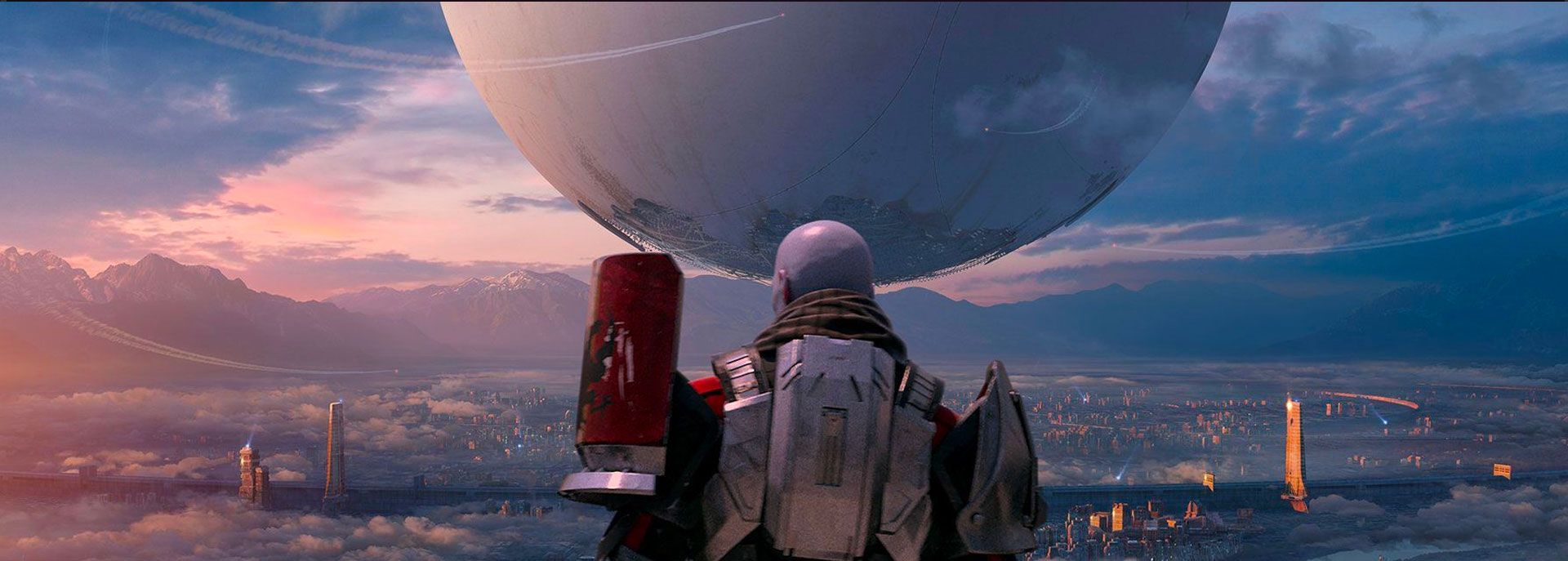Art director, matte painter, and concept artist, Nick Hiatt has garnered extensive experience in the world of games and VFX. His work includes mega hit titles such as Star Wars: Episode 7, Star Trek: Beyond, 12 Strong, Cloverfield: Paradox, and Mission Impossible 5. Nick Hiatt owns Bang Bang FX, a studio specializing in concept art, matte painting, and 3d environments. Terrain Domain is another company Hiatt recently launched which provides premium 3d environments for the creative community. To learn more, visit NickHiatt.com and TheTerrainDomain.com
GW: As a concept artist, can you describe your workflow? For example, tried and true methods and/or workflows that ebb and flow with the dynamics of the project?
NH: My workflow for concept art starts off with lots of loose thumbnails, then I translate the best thumbnail into a rough color key so I can lock down lighting, texture and materiality. From there, I either block out the scene in 3d and then paint on top of the render, or I work all in 2d. It depends on the variables of each image as to whether I work in 2d or 3d. 3d is becoming so fast these days that I find myself more and more starting out in 3d as a base.

GW: As an art director, can you describe your day-to-day responsibilities and interactions? Plus, what key aspects do you utilize that help ensure daily success?
NH: My day to day as an Art Director at my studio varies from project to project. The main goal as an Art Director is to keep a consistent feel and balance to the final product over the life of the production. Often, we have multiple artists working on the same shots or assets so there is a need for consistency and a cohesive design language throughout the sequence. This is where a good art director comes in handy to keep the ship on course and keep the visual language consistent.
GW: What are some common matte painting challenges that pop up in your day-to-day, and how do you overcome those?
NH: Haha, I think the most common Matte Painting challenge I face these days is time. That’s the great thing about our field of digital arts: the technology is always evolving, allowing us to do more with less and do it faster and cheaper. More and more I see Matte Painting evolving from a 2d approach to a 2d / 3d approach. Especially with the use of camera projection becoming so common, it’s best that your 2d matte paintings have a 3d footprint so they fit into the pipeline of VFX studios seamlessly.

GW: Can you share what led you toward owning the studio, Bang Bang FX, and what running a studio entails?
NH: It has always been my goal to work for myself and start my own studio. I spent the first five to six years of my career working at VFX studios across LA. At each studio, I learned as much as I could and made as many friends as possible. This became the necessary foundation for me to start my own studio and have an existing client base to pull from.
In many ways, running your own studio is rewarding, but it’s also very demanding. My initial instinct was to grow big and try and staff up with employees etc., right from the beginning. But, I quickly learned this came with a massive overhead and stress that was not working for me and the life style I wanted as an artist. So, over the years I have reduced my footprint of my studio and leaned more heavily on pulling from a pool of trusted freelancers instead of running a large VFX studio. This way you get all of the positive sides of running a studio without all of the overhead and stress. Today, Bang Bang FX consists of myself and two other artists who cover the bases from 2d to 3d workflows which allow us to take on any VFX project.
GW: Can you describe the Terrain Domain and your usage of drone footage?
NH: I started the Terrain Domain with a fellow VFX artist, Zach Mandt. We saw the value in using Photogrammetry to create 3d Terrains almost immediately when the technology became available. Zach and I have taken frequent camping trips in California and have explored some really amazing locations, so, we decided to bring all of our gear along and scan these beautiful Terrains for our personal work. We used it on a few projects and quickly saw the value to our community for these 3D Terrain Scans. That is when ‘The Terrain Domain’ was born. We have a whole new line of scans being processed right now and a list of locations we are about to scan in the coming months. Stay Tuned! www.theterraindomain.com

GW: Out of all that you juggle, you’ve conducted instructional courses to boot! What stands out to you about your experience teaching at Gnomon Workshop?
NH: Well, it was an honor for me to give back to the Gnomon Community. I started consuming Gnomon DVD’s all the way back in early 2000 when Gnomon first came on the scene. Back in the day, there was no Youtube or 3D artist network on the web at that point in time. Gnomon quickly became the best resource for Art Students interested in 3d and VFX. I probably learned just as much if not more from Gnomon DVD’s as I did all my teachers at Art School. When I had the chance to give back to the Gnomon Community by sharing what I have learned over the years, I leaped at the opportunity. It is important to give as much as you get and this is my way of giving back to the community that has given so much to me as an artist.
GW: What past project has been truly moving or influential, and why did it impact you?
NH: I would say the most influential project for me was Art Directing ‘Star Wars : Episode 7’ at Bad Robot for J.J. Abrams. That was such a magical experience to be there at that place in time. I had to pinch myself daily to make sure it was not a dream…. I mean it was a dream come true but I just wanted to make sure it was real, hahaha. I can’t say enough good things about everyone at Bad Robot and Kelvin Optical… I have so much love and respect for everyone involved.

GW: Which tools, programs, or books would you advise every new artist to explore?
NH: This is the amazing thing about being a digital artist, there are so many avenues and facets to our industry that each person can choose what path and direction is right for them. My advice to any student is this: get a broad understanding of the entire VFX or creative pipeline and choose what area fits your skill set the best. You need to balance passion and employment so there is a fine line to walk as an artist. There is so much amazing art on the net that I would also advise young artists to absorb as much art as you can from as many sources as possible. Ohh, and learn 3d…. everything is headed that way.

GW: What software and/or hardware technical advancement are exciting you these days?
NH: I am super excited about the computing power that has allowed 3D to become orders of magnitude faster. And, I am super excited to learn Unreal and Unity. I see a big shift in Productions using these two realtime render engines in the near future.
GW: Nick Hiatt, your incredible advice and guidance are truly inspiring. Thank you for your kindness and taking the time to share.
NH: Thank you for sharing my experience and contributing to our amazing Digital Arts Community. We have such an amazing field and I am super excited to see how Digital Art transforms over the coming years.




Related News
Capturing Assets & Environments for Call of Duty: An Interview with Gui Rambelli
Feb 10, 2025
Balancing Elegance with Aggression: An Interview with Chris Beatty
Nov 21, 2024
The Artist Behind the Characters: An Interview with Amy Ash
Nov 01, 2024